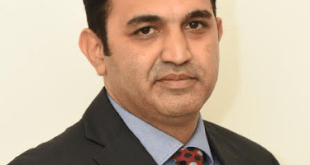 When you’re caught in the middle of a health emergency, the last thing you want to worry about is how to pay for the treatment. Having a mediclaim policy helps, but only if you know how to use it the right way. Many people get confused by paperwork, unclear steps, and long processes, which lead to delays.
When you’re caught in the middle of a health emergency, the last thing you want to worry about is how to pay for the treatment. Having a mediclaim policy helps, but only if you know how to use it the right way. Many people get confused by paperwork, unclear steps, and long processes, which lead to delays.
This guide will help you navigate it all without stress. Whether you’re planning to buy medical insurance or already have a policy in place, it helps to understand how the claim process works in real situations.
Navigating Cashless Claims: What Happens and When
In most cases, if you’re at a hospital that is part of your insurer’s partner network, the insurer can settle the bills directly with the hospital. You don’t need to worry about arranging money upfront unless the treatment involves exclusions. Here’s what to expect.
Step 1: Informing the Hospital and Filling Out the Form
Once you’re at the hospital and have decided to go ahead with a cashless claim, the first task is simple. Head to the medical insurance helpdesk and ask for the pre-authorisation form. This document needs to be filled out carefully with all necessary details. It usually asks for a diagnosis, suggested treatment, expected duration, and a cost estimate. Fill this completely and hand it back to the hospital staff.
Step 2: Waiting for the Green Signal
The hospital then forwards this form to your insurer or their representative. This step involves checking your mediclaim policy coverage, terms, and the nature of the treatment. Based on this evaluation, the insurer will give an update, either approve or disapprove. You’ll get to know through the hospital’s helpdesk, usually via an email or message update.
Step 3: Treatment Proceeds
If everything is approved, you can continue with the hospital stay and treatment as planned. The insurer will directly handle the eligible part of your expenses. Anything outside the coverage will have to be paid by you before you leave the hospital.
Step 4: Bill Clearance at Discharge
At the time of discharge, the final bill is shared with the insurer for approval. The eligible amount is paid to the hospital directly, while any extra charges, such as meals, personal expenses, or non-covered items, will be given to you for payment.
The Process of Filing for Reimbursement
If you were treated at a hospital that isn’t a part of the insurer’s network, you’ll need to pay the bills first and then apply for reimbursement. While it may sound a bit more involved, the steps are quite simple when done right. Here’s a breakdown of how you can manage the reimbursement process of best health insurance with ease.
Step 1: Get Hospitalised and Settle the Bills
When you’re admitted to a non-network hospital, cashless service isn’t available. This means you will have to clear all hospital dues yourself, right from admission to discharge. Once that’s done, make sure to collect the original invoices, doctor’s notes, and test reports. Every document matters, so preserve them safely.
Step 2: Register Your Claim
After your treatment is complete and you’ve been discharged, the next step is to file the claim. You’ll need to submit all relevant papers, hospital bills, treatment summaries, discharge certificates, prescriptions, diagnostic reports, and any medicine receipts. All of these together help the insurer verify that the treatment was necessary and falls under the terms of your policy.
Make sure to also share your identity proof and bank account details for the reimbursement to be processed. This step is the same whether you’re filing for yourself, your family, or using health insurance for senior citizens.
Step 3: Verification Process Begins
Once your documents are submitted, the insurer or their representative will go through each document. They will check if the treatment, diagnosis, and hospital charges match the policy coverage. If something is unclear or missing, they might reach out for clarification or additional documents. It’s always a good idea to keep soft copies of everything and stay in touch during this time for quicker processing.
Step 4: Receiving the Settlement
After successful verification, the approved amount is transferred directly to your registered bank account. If any deductions are applicable (like non-covered items), you’ll be informed of the breakdown. This step closes the process, and you’ll get a notification once the amount is disbursed.
Documents Checklist for Reimbursement Claims
Make sure to collect all original records and receipts. These will be essential to support your reimbursement request.
- Signed Claim Form: This form has to be filled out and signed by the person insured under the policy.
- Government-Approved ID Proof: You’ll need a copy of a document like Aadhaar, voter ID, passport, or driving licence.
- Doctor’s Note or Advice: This must clearly mention why hospitalisation was advised, what tests were conducted, and which medicines were prescribed.
- All Original Bills: Keep bills and receipts from the hospital, diagnostic labs, and chemists. Ensure these are not lost or tampered with.
- Discharge Summary and Case Notes: The hospital’s official discharge note and any ongoing case papers should be submitted.
- Reports from Labs and Scans: If you had blood tests, scans, ECGs or X-rays, attach those reports too.
- Legal Reports (If Needed): For accident-related treatment, include a copy of the police FIR or medico-legal case documents. If the case involved a fatality, a post-mortem report may be necessary.
- Bank Details for Refund: To receive the money, the insurer will need proof of your bank account. A cancelled cheque, a copy of your passbook, or a statement with your name and account number will be required.
Closing Thoughts
A mediclaim policy works only when you know how to get the most out of it. Whether you decide to go cashless or file for reimbursement, the process is easy, but only if you follow the rules carefully. Being organised does help so much to get your pay in on time with no stress!
 Newspatrolling.com News cum Content Syndication Portal Online
Newspatrolling.com News cum Content Syndication Portal Online







